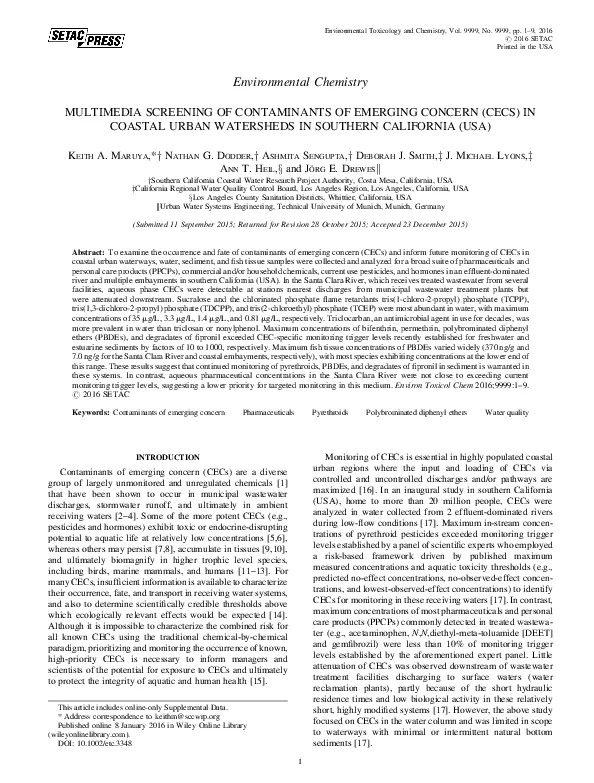To examine the occurrence and fate of contaminants of emerging concern (CECs) and inform future monitoring of CECs in coastal urban waterways, water, sediment, and fish tissue samples were collected and analyzed for a broad suite of pharmaceuticals and personal care products (PPCPs), commercial and/or household chemicals, current use pesticides, and hormones in an effluent-dominated river and multiple embayments in southern California (USA). In the Santa Clara River, which receives treated wastewater from several facilities, aqueous phase CECs were detectable at stations nearest discharges from municipal wastewater treatment plants but were attenuated downstream. Sucralose and the chlorinated phosphate flame retardants tris(1-chloro-2-propyl) phosphate (TCPP), tris(1,3-dichloro-2-propyl) phosphate (TDCPP), and tris(2-chloroethyl) phosphate (TCEP) were most abundant in water, with maximum concentrations of 35 μg/L, 3.3 μg/L, 1.4 μg/L, and 0.81 μg/L, respectively. Triclocarban, an antimicrobial agent in use for decades, was more prevalent in water than triclosan or nonylphenol. Maximum concentrations of bifenthrin, permethrin, polybrominated diphenyl ethers (PBDEs), and degradates of fipronil exceeded CEC-specific monitoring trigger levels recently established for freshwater and estuarine sediments by factors of 10 to 1000, respectively. Maximum fish tissue concentrations of PBDEs varied widely (370 ng/g and 7.0 ng/g for the Santa Clara River and coastal embayments, respectively), with most species exhibiting concentrations at the lower end of this range. These results suggest that continued monitoring of pyrethroids, PBDEs, and degradates of fipronil in sediment is warranted in these systems. In contrast, aqueous pharmaceutical concentrations in the Santa Clara River were not close to exceeding current monitoring trigger levels, suggesting a lower priority for targeted monitoring in this medium. Environ Toxicol Chem 2016;9999:1–9. © 2016 SETAC
